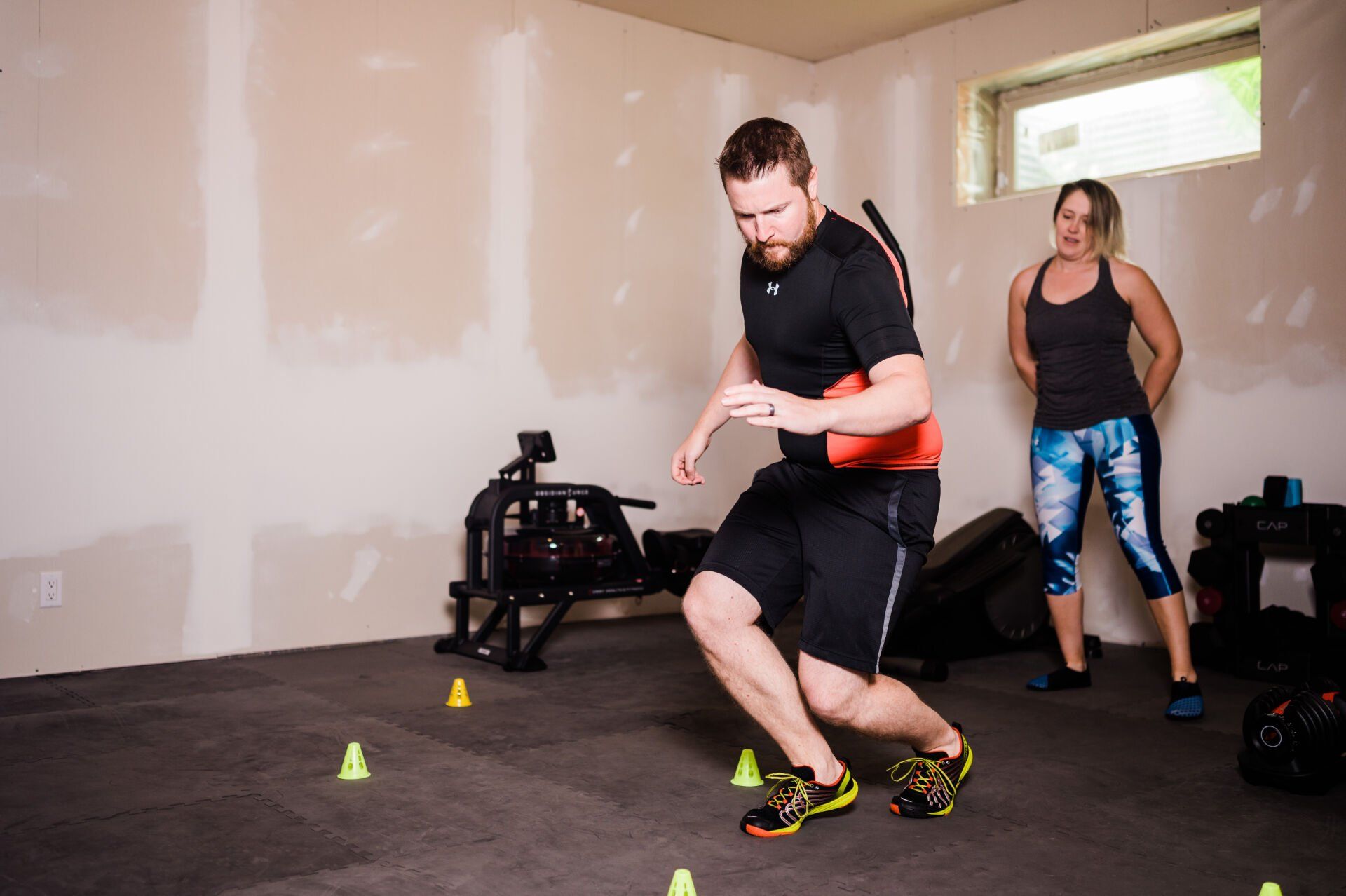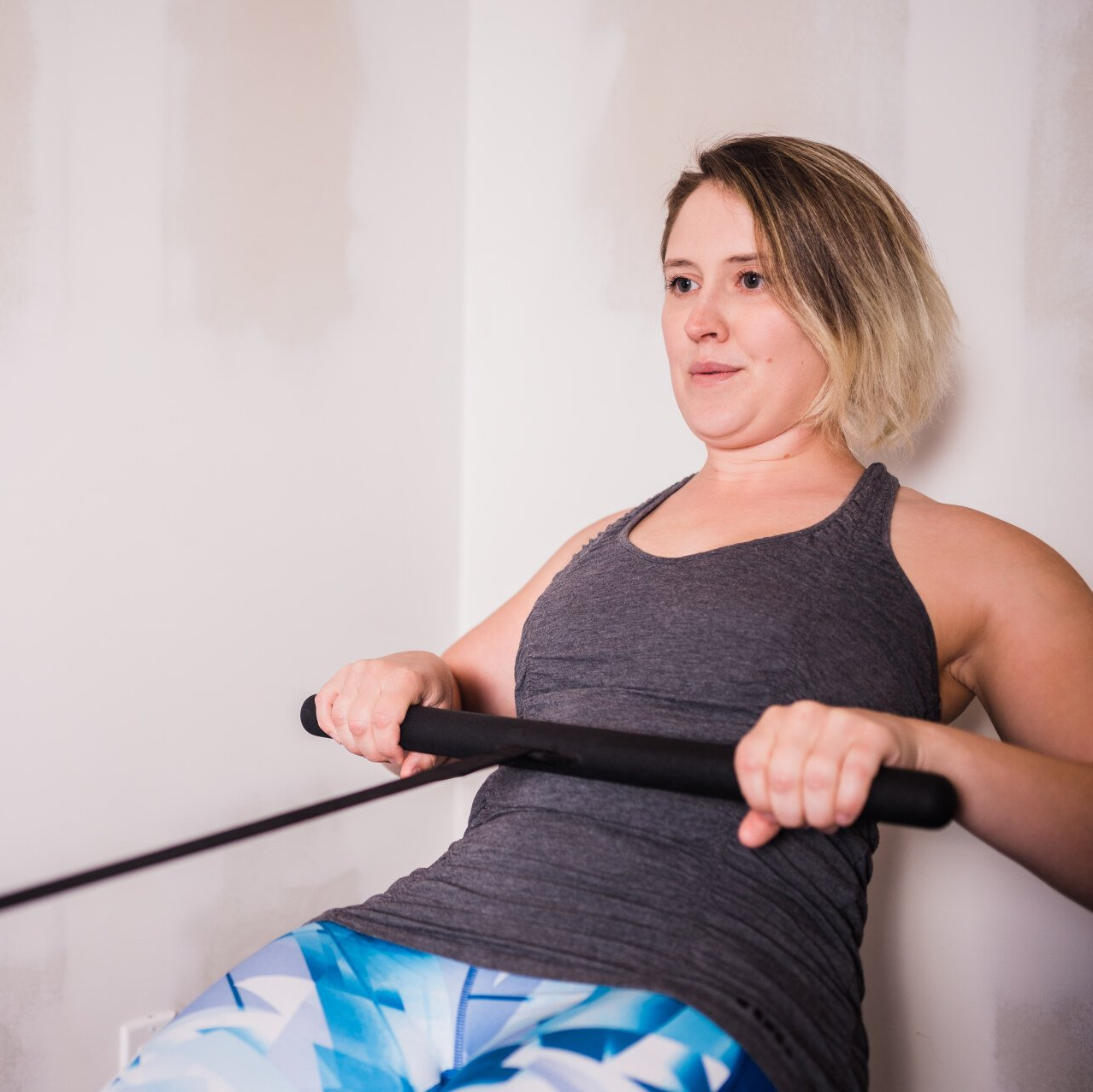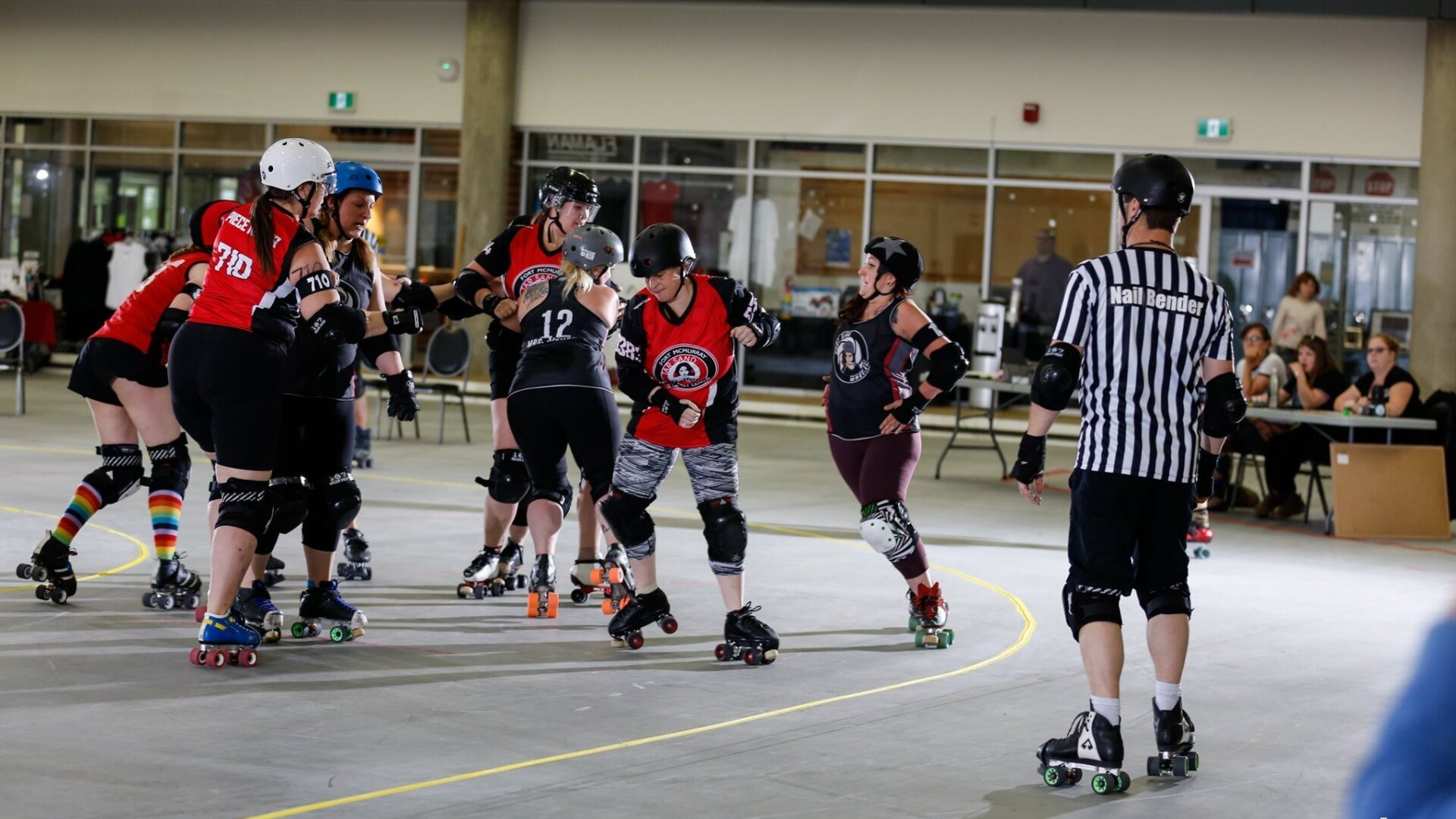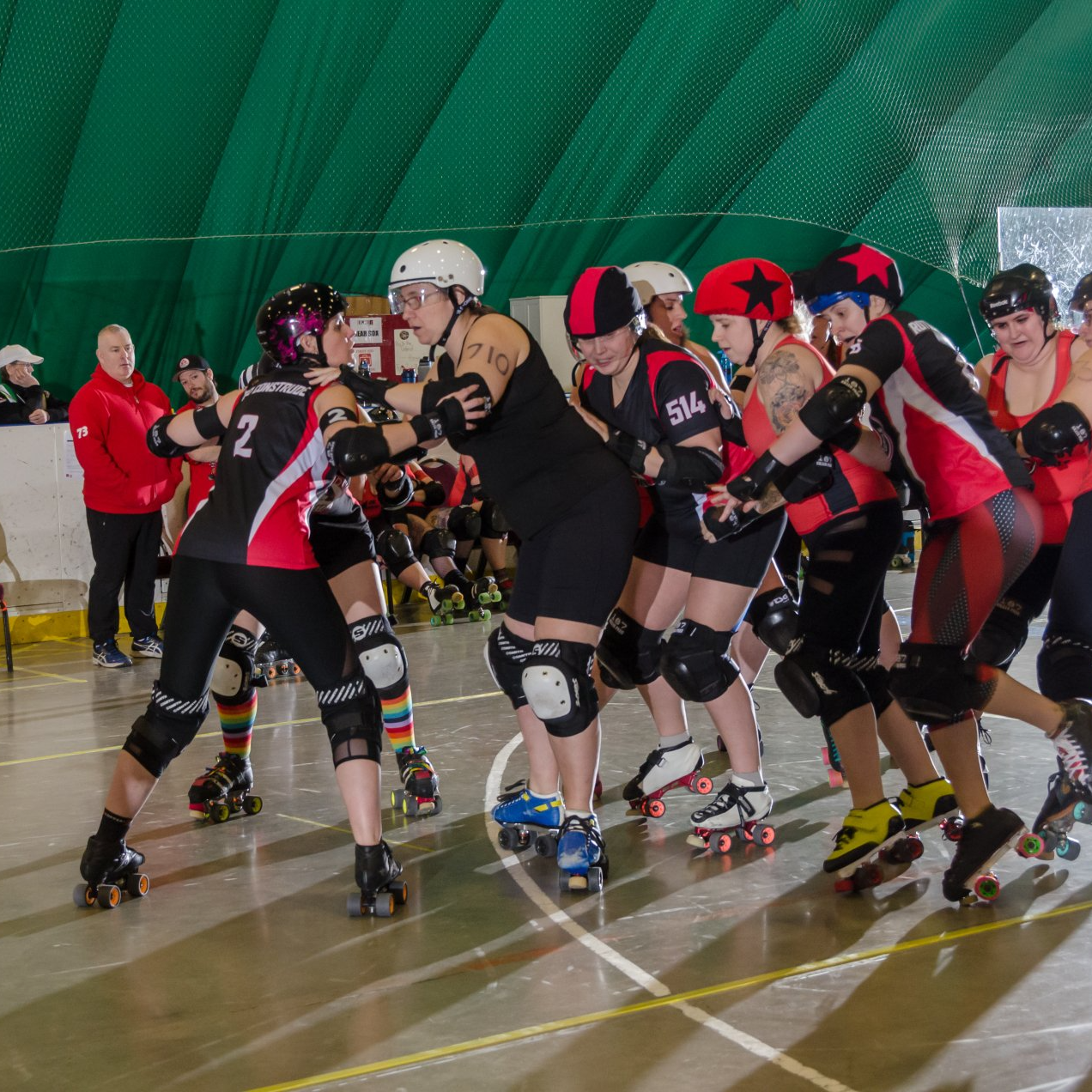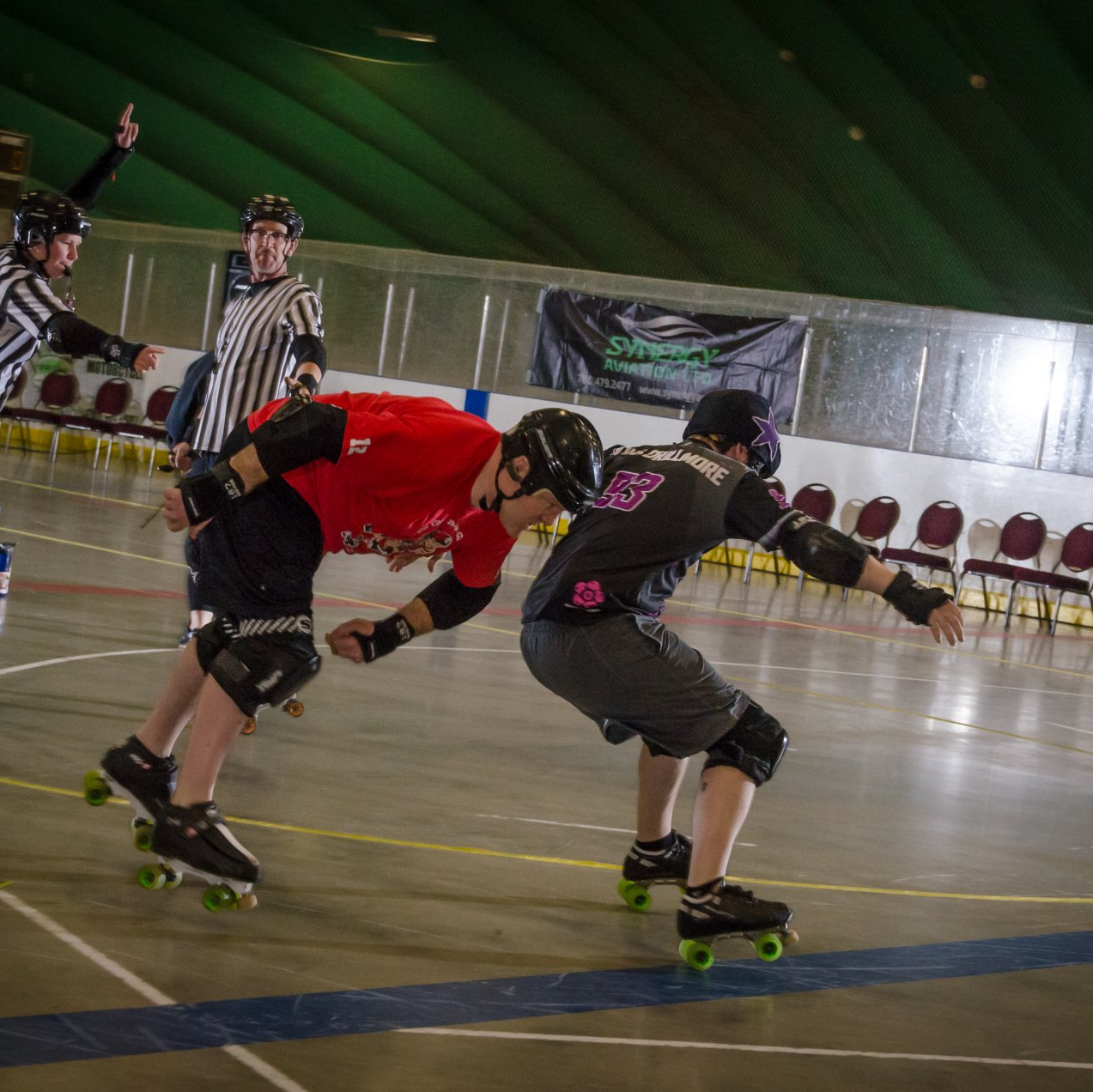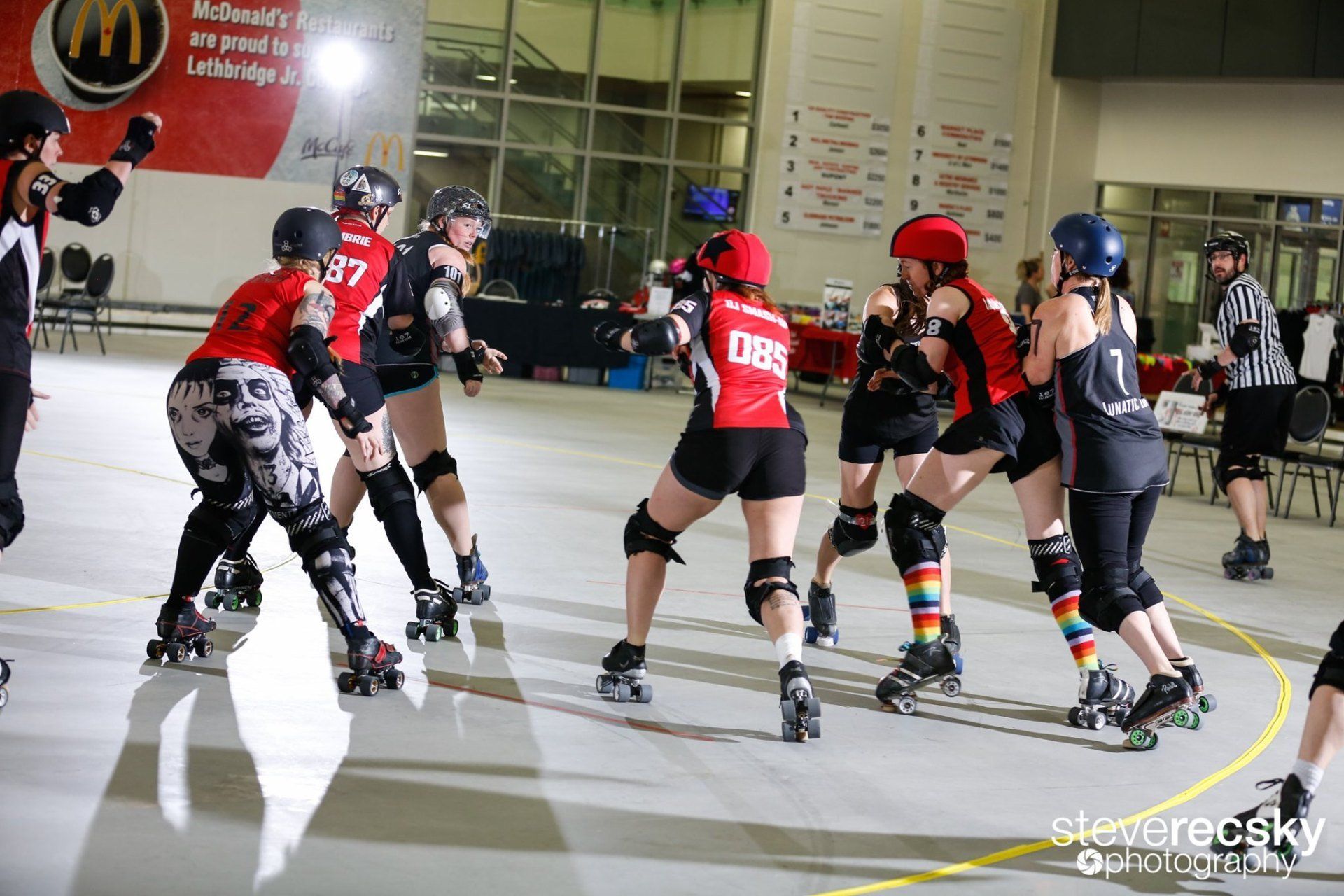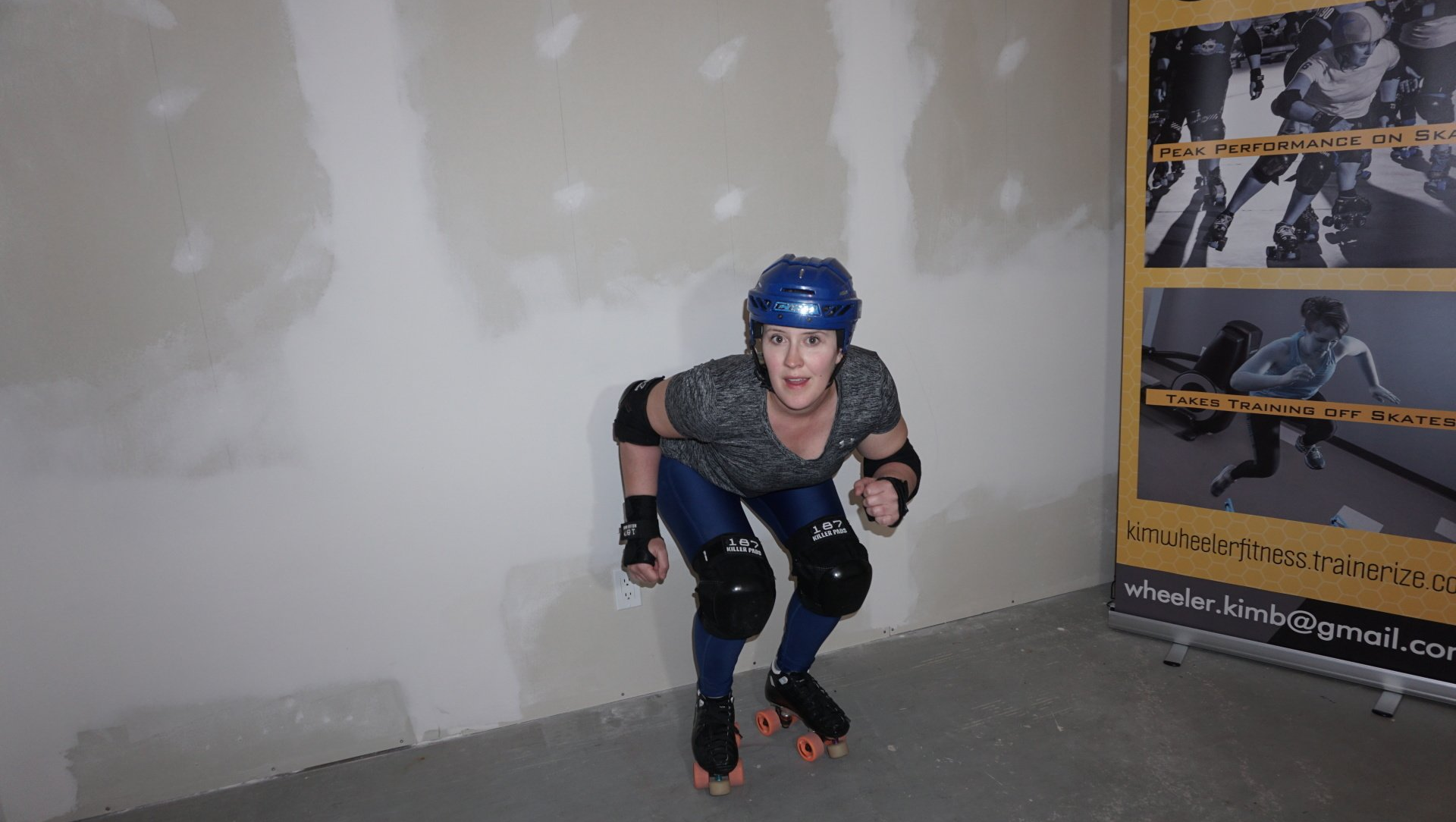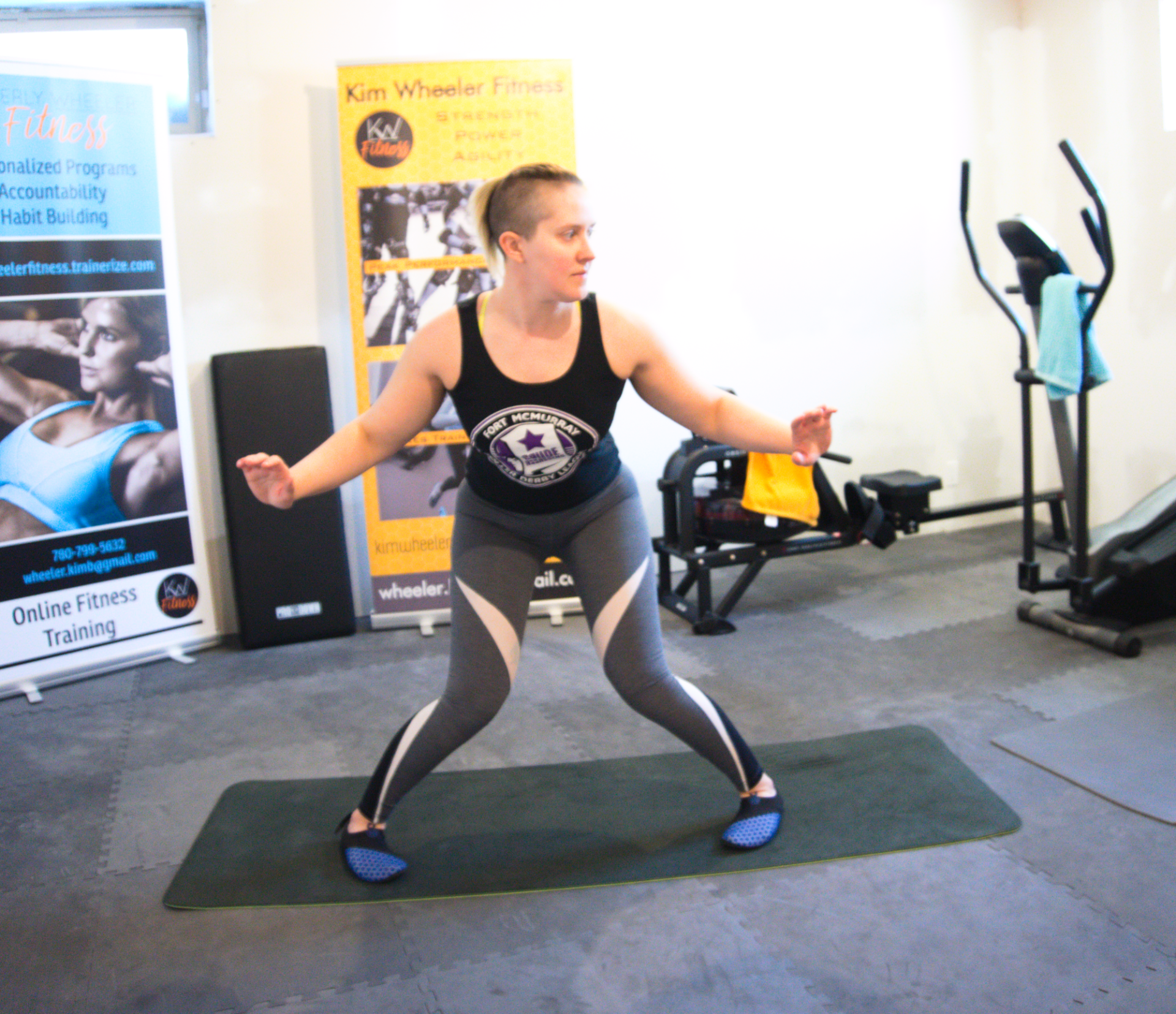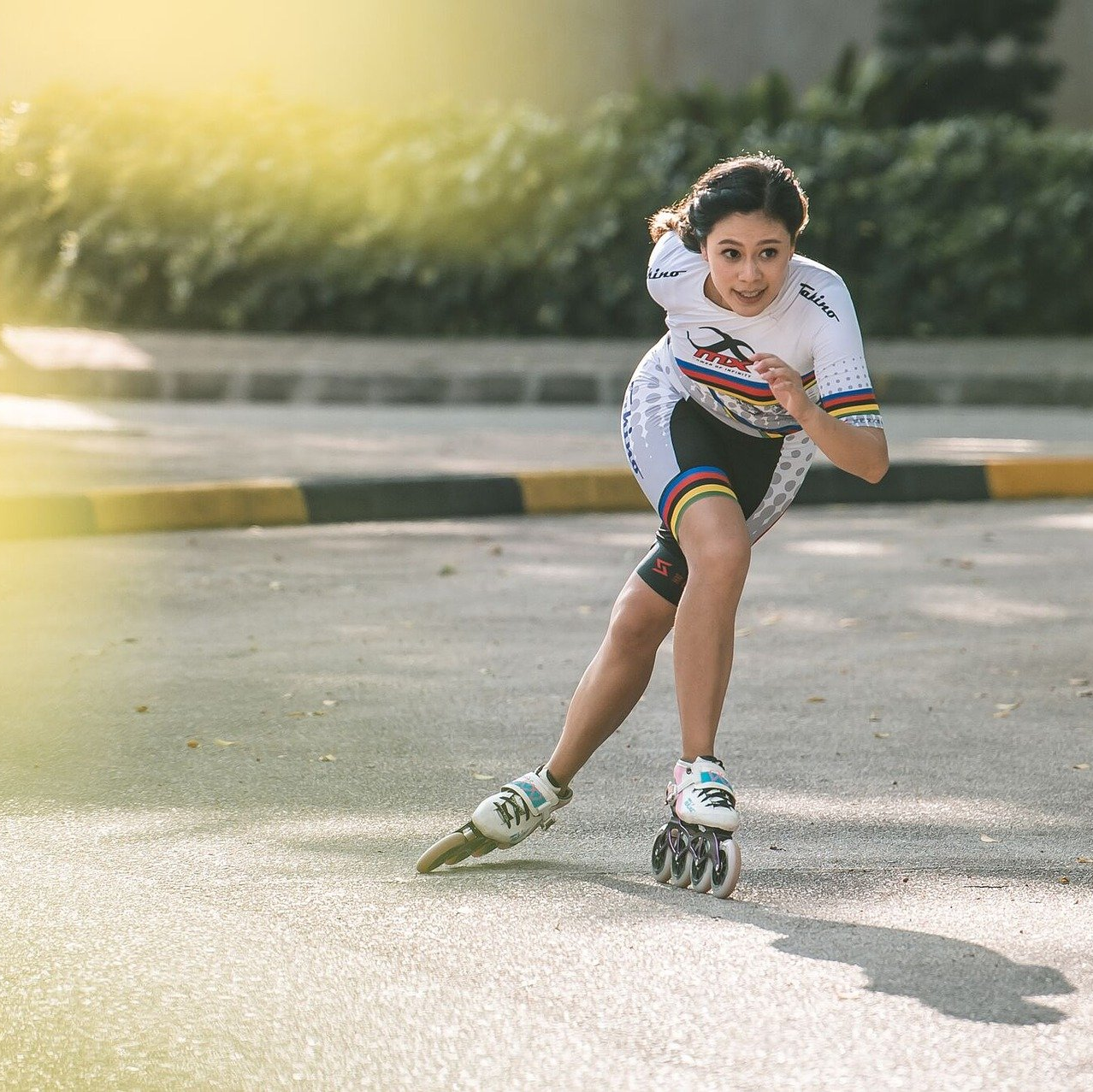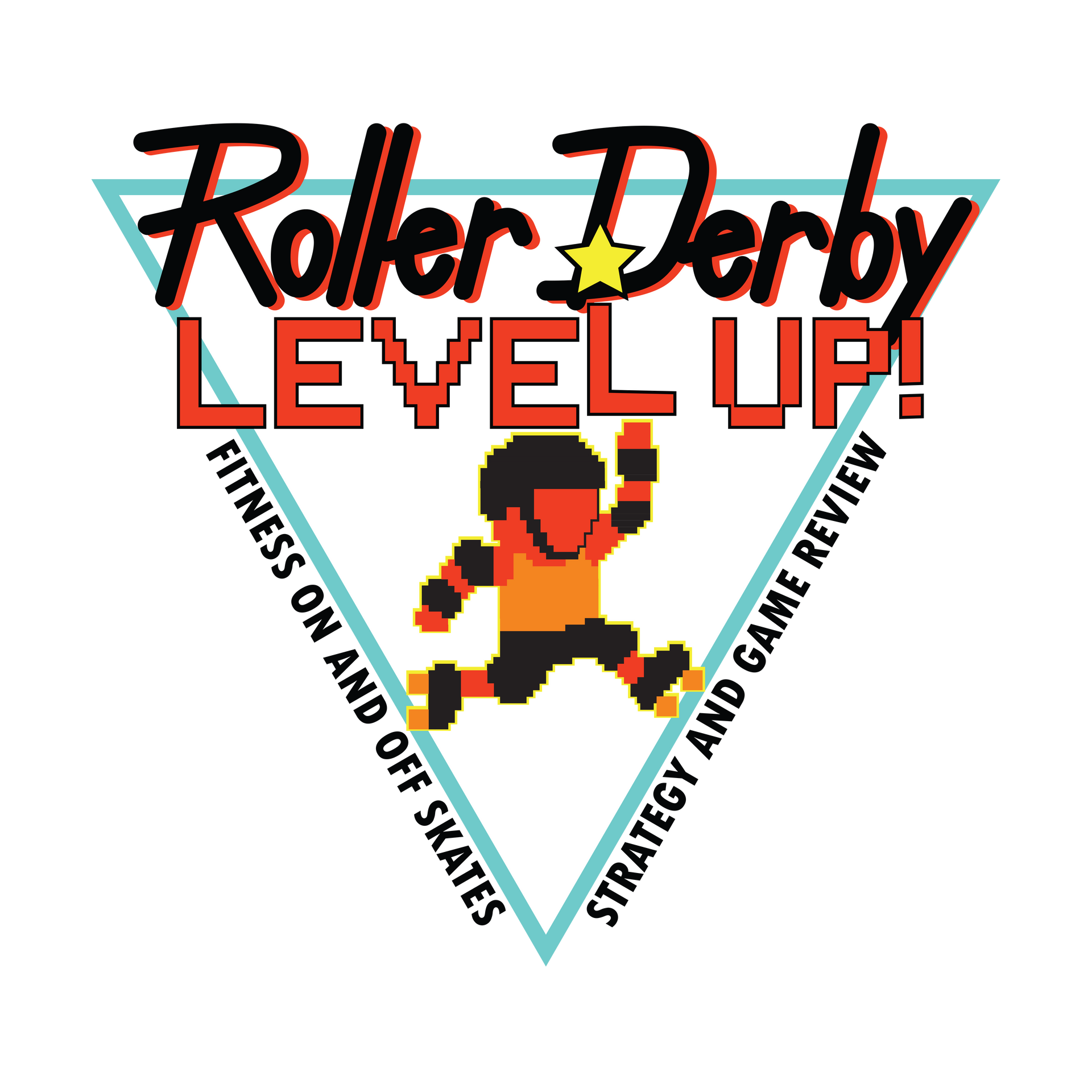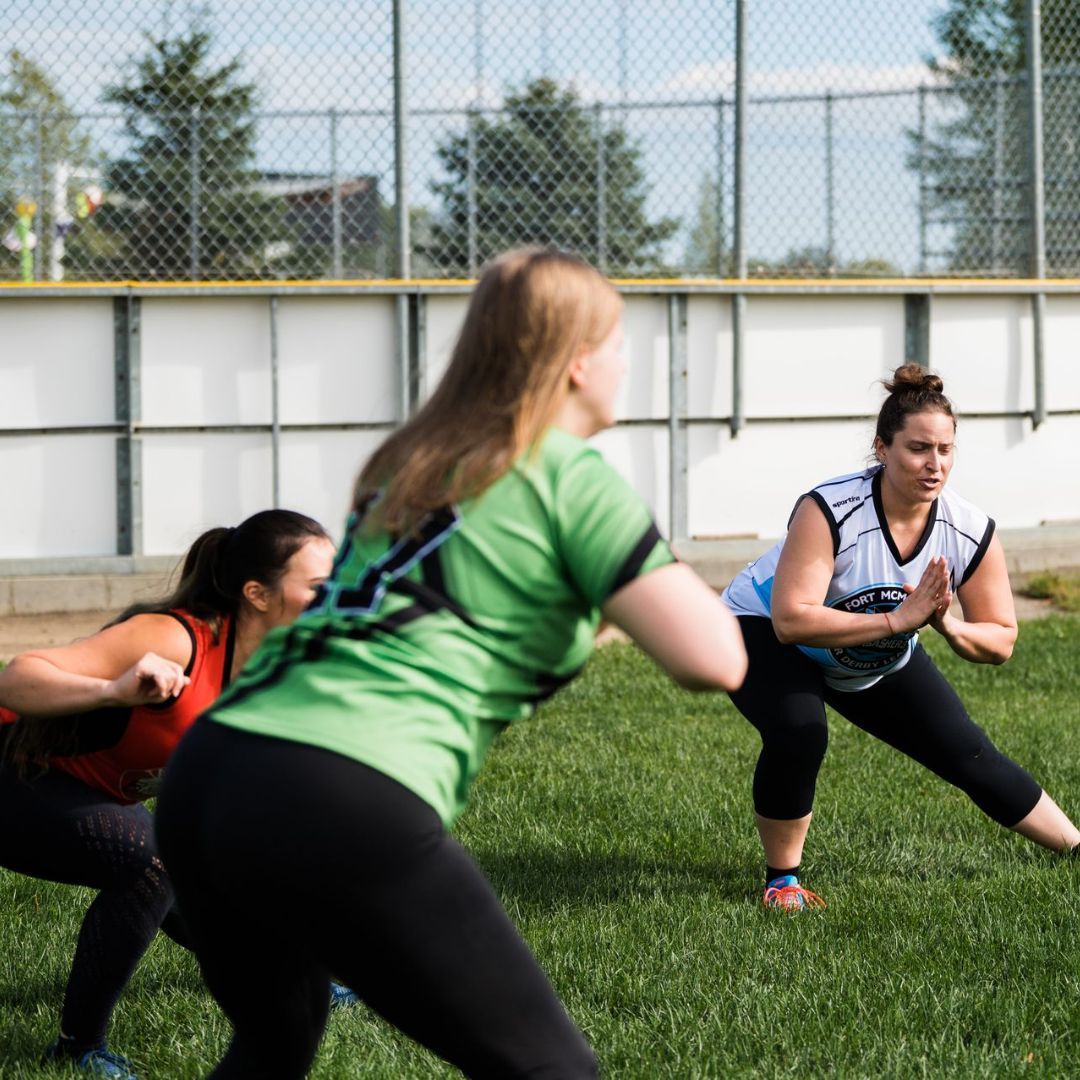Train to Take a Hit
Become so stable you never go down
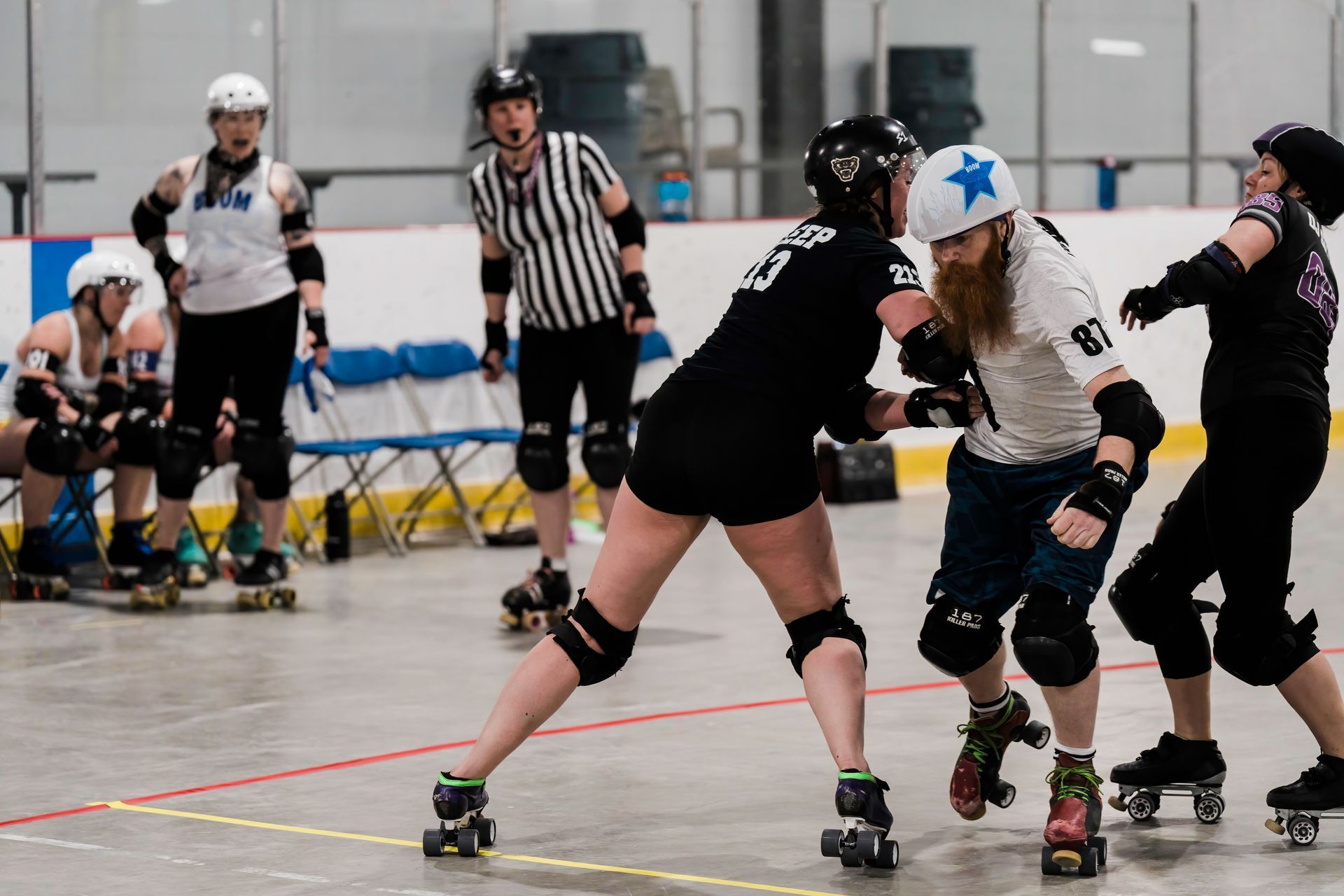
You’re speeding around the track, dodging blockers and feeling successful! But next lap, you get rocked. You saw it coming, you braced, and still, the hit knocked you out and down. Slowly getting up, you skate back onto the track, a little more wary this time around. What can you do differently to not go flying next lap? Avoiding being hit altogether is the best option, but not always doable. The good news is that a combination of off and on skates training will help you stay up and skating after taking a hit.
On skates training is going to be beneficial when you see the hit coming and can’t dodge it. Seeing the opposing skater coming in gives you time to react and adjust your position. When I work with new skaters and see them brace for impact, they often tighten up their muscles and hope that by being a rock they will be too dense to knock over. In actuality, you want to be relaxed and fluid. The fluidity of your body will allow you to change your center of gravity to compensate for the impact. Imagine you are catching a fly ball in baseball, you don’t leave your arm fully extended out and tighten all your muscles. You keep your arm relaxed and allow it to cushion the ball’s momentum as you catch. While a person coming to hit you is much larger than a baseball, the same idea applies. So when you see that skater coming in to hit you, relax. To practice this, partner up and skate around the track hitting each other. Work on staying relaxed and allow your body to move with the hit. Start slow and really take note and feel how your body is moving. Even better, discuss it with your partner or team after to hear how everyone is experiencing the movements.
The next thing you can do to help you stay up against a hit, especially the big ones where the opposing skater comes rocketing across the track at you, is to take away their control. We aren’t all physicists on the track, but we subconsciously know what is going on. That opposing skater has calculated and determined exactly when and how they will hit you. Their body is responding based on their movement and yours. You can take that control away by moving towards them. Surprise! You will still hit each other, but now the timing they were using is all off. Essentially you are moving to hit them first.
Off skates training comes in when you are surprised by the hit and you don’t see it coming. Above, I talked about staying relaxed and allowing your center of gravity to move with the impact. This is much more effective with the right off skates training. You need a strong core, but more precisely a stable core. The difference? A strong core would be holding a plank position nice and straight for a really long time. A stable core would be holding that same plank position while moving a leg or an arm. Stability is what you want in athletics. This is the ability to engage and use your core while under motion.
If you are new to training, start by building a strong core. You need to have the basic holds mastered before you move to stability training. Work with a partner (or you can hire me!) to watch your form and help you. A few goals are to hold a plank perfectly straight for 15 seconds and to get up from a half kneeling position while keeping your torso straight.
Once you’ve got that strong core built up, you can start to train your core stability. This is where things can get fun! Balance boards and BOSU balls (a domed yoga ball with a large flat face) are great tools to easily train stability. You can do pretty much any exercise on them and it forces your core to work on stabilizing you. It’s great for combo training and saving time. For example squats, shoulder press, and push ups can all be done with a BOSU ball. Your goal when adding in an unstable surface is to not fall off and stay as in control as possible. Engage your core and shift your weight as you need to stay on and steady.
Sample Workout
Recommended 3-5 sets, rest between exercises. Stop if you are feeling fatigued and no longer engaging the core. The main goal is to build stability in the core.
| Move | Reps |
|---|---|
| Plank Hold with Contralateral Leg/Arm Extensions | 4 reps each side, keep shoulders and hips steady, avoid rotation |
| BOSU Dead Bug | 8 reps |
| BOSU Single Leg 1 Arm Row | 6 reps each side |
| BOSU Push Ups | 8 reps (if too easy, try one hand on floor) |
| BOSU Reverse Lunge | 6 reps each side (front foot on BOSU) |
| BOSU Squat to Shoulder Press | 8 reps |
Ready to hit the next level and build your core stability? Check out my Off Skates Training Offers HERE
